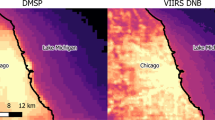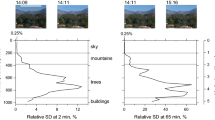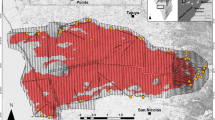Abstract
DURING examination of automatic picture transmission system photographs taken by Nimbus 1, a photograph exposed from 308 miles above Lake Ontario, during orbit 254, on September 14, 1964, clearly showed the complex folded pattern of the Appalachian Mountains in the Pennsylvania region. The photograph, produced by a slow scan kinescope method, designed and developed by the National Research Council of Canada, specifically to record and reproduce the full capabilities of the 800-line high-resolution automatic picture transmission vidicon of this American meteorological satellite, was one of many received at Ottawa and Frobisher Bay ground stations.
This is a preview of subscription content, access via your institution
Access options
Subscribe to this journal
Receive 51 print issues and online access
$199.00 per year
only $3.90 per issue
Buy this article
- Purchase on Springer Link
- Instant access to full article PDF
Prices may be subject to local taxes which are calculated during checkout
Similar content being viewed by others
References
Wilson, J. Tuzo, Amer. Sci., 47 (1959).
Author information
Authors and Affiliations
Rights and permissions
About this article
Cite this article
TAGGART, C. Interpretation of Geological Features on a Satellite Photograph. Nature 207, 513–514 (1965). https://doi.org/10.1038/207513a0
Published:
Issue Date:
DOI: https://doi.org/10.1038/207513a0
Comments
By submitting a comment you agree to abide by our Terms and Community Guidelines. If you find something abusive or that does not comply with our terms or guidelines please flag it as inappropriate.



